Oscillatory Movement
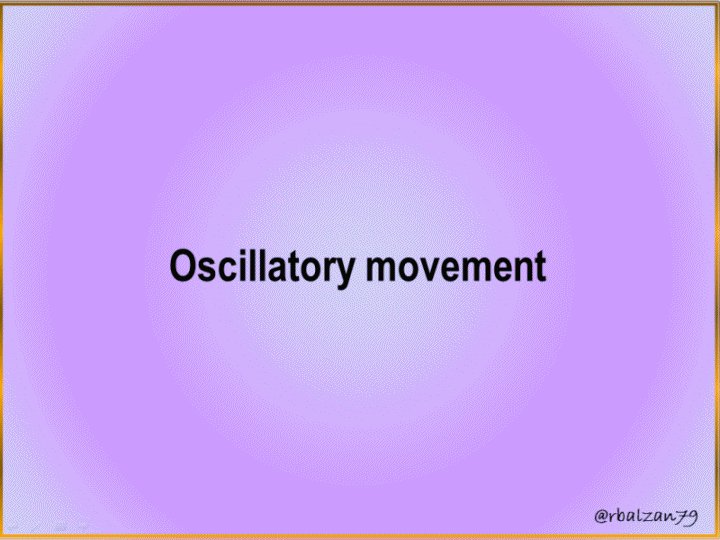
Greetings to the entire academic and scientific community of steemit.
Introduction
Humanity throughout its history has worked tirelessly to understand the enormous complexity involved in the different movements present in our universe, and any of us can appreciate or perceive these phenomena in some way through our senses.Up to now we have analyzed the fundamental movements such as the circular, parabolic, elliptical and hyperbolic and we begin to know those mobilities product of the combination of the movements previously described, this last characteristic as a result of essential utility for the development of our elemental activities in any area.
As we continue observing our environment we find many more movements, and they can be differentiated due to the trajectory followed by such mobilities, trajectories represented by geometric places of innumerable geometric figures that give the name to these mobilities.
We must emphasize the extraordinary work of kinematics because both the human body and everything that makes up our environment in some way or another presents some kind of movement, so that any understanding offered by this science of movement has really been of essential value to our development.
Through the study of the circular movement we could notice that it represents a periodic movement because a certain particle, body or object (mobile) carries out a complete turn in its path and with it we can observe that the values of magnitudes such as; position of the mobile, speed and normal or centripetal acceleration are repeated.
Therefore, with the description of the circular periodic movement carried out by a certain body, we can configure the fundamental bases to understand the existence of innumerable periodic but not circular movements, among which we find types of movements such as the oscillatory, and this movement as well as any other type of phenomenon of these characteristics are and will be part of our lives.
We can appreciate this phenomenon when a certain particle, body or object moves or travels a trajectory (a certain geometric place) continuously from one side to the other with respect to its position of stable equilibrium.
Many are the everyday examples represented by such an oscillatory phenomenon, but without going too far we can express that anyone reading each word that makes up the lines of each paragraph of this article makes a kind of oscillatory movement, either with his head or with his eyes because they move from one side to the other at the end of reading one line after another.
It is important to always take into account the presence of another type of movement caused by a vibration because this type of movement is also oscillatory, however, we must highlight the difference between the two in order to understand why we call one oscillatory and the other despite making oscillations is called vibratory.
According to the above, we will use as a principle the velocity of oscillations, and with this we could say that in a proper oscillatory movement the path of said oscillations is relatively slow, and when its velocity or speed increases, such oscillations are called vibrations, and therefore, their respective movement is known as vibratory.
As it has been expressed, in this opportunity we will analyze the oscillatory movement and in another article we will analyze the vibratory movement, therefore, in this type of movement a determined particle, body or object as in any other movement (as those analyzed in previous articles) describes, travels or draws a trajectory which essentially is to occupy by the geometric place of a determined geometric form or figure.
For the interpretation of the path of this movement, the curvilinear figure is required as the circumference (but a fraction of it), for example, the movement of a simple pendulum, where it is no more than a punctual mass (m) which is tied to one end of a thread or string of length (l), holding the other end of the thread to make it oscillate from one side to another periodically in relation to a position of equilibrium.
The path of the mass of this pendulum represents a fraction or portion of a circumference, it being clear that because it is a reciprocating movement it will never cross the geometric place of this circular figure but if a part of it, highlighting in both movements (circular-oscillatory) the periodic aspect, however, one totally circular curvilinear and the other oscillatory curvilinear, the following figure 1 shows the oscillatory trajectory.
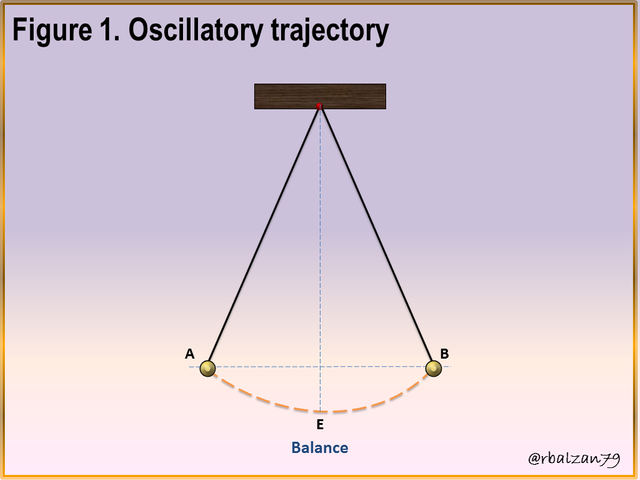
Oscillatory Movement
We know that everything related to our existence is linked to the phenomenon of movement, from our material body to the infinite universe that surrounds us is immersed and also depending on some type of movement for a given balance, therefore, we could say that when referring to the phenomenon of movement is clearly related to a synonym of life there the importance of any analysis related to such a phenomenon.
We must always have present that when we observe a type of mobility periodically and in turn moves back and forth in the same way to both ends of a given position of equilibrium and also on the same trajectory, then, we could say that we are in the presence of an oscillatory movement.
This type of phenomenon represents one of the most outstanding and important movements studied by the physical science, therefore, we can express that for this science the most important oscillatory movement is what we call Simple Harmonic Movement, representing the same an exemplary mathematical model, because it is coupled with great precision to innumerable oscillatory movements that are developed in our environment.
Therefore, as in past publications we can continue demonstrating that the trajectory traveled by a particular particle, body or object will allow us to distinguish the type of movement developed by that mobile.
It is always important to be clear that when a certain body is removed from its stable or equilibrium position, it will try to recover it through oscillatory movements around that equilibrium position. When a body presents free oscillations, we say that they are not forced; therefore, dissipative forces do not act in the body, that is to say, they are not conservative and the body can oscillate indefinitely.
We could also find movements of a body which is removed from its equilibrium position through the application of a certain energy through a certain mechanical system, and when it is exhausted the body will tend to stop until it reaches its point of stable equilibrium, but in the meantime will continue with an oscillatory movement not cushioned, as is the case of the pendulum clock as we can see in the following figure 2.
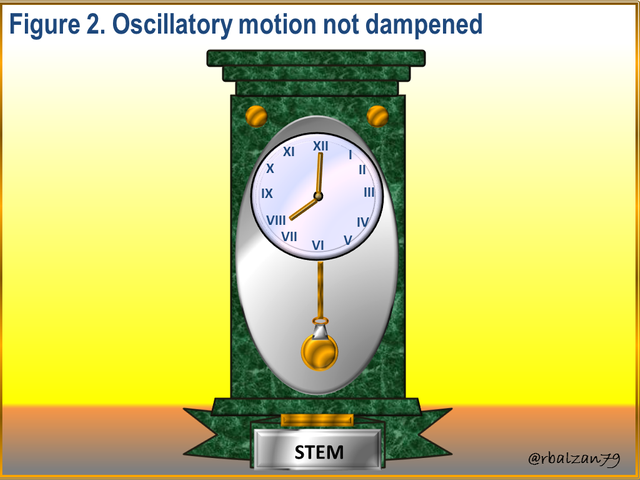
We can also find a type of oscillatory movement cushioned, a daily example we could say that it represents a rocking chair type which to stop applying force with our hands or feet for its movement will end up stopping at their respective point or position of stable equilibrium, this is due to the friction with the air as we can see in the following figure 3.
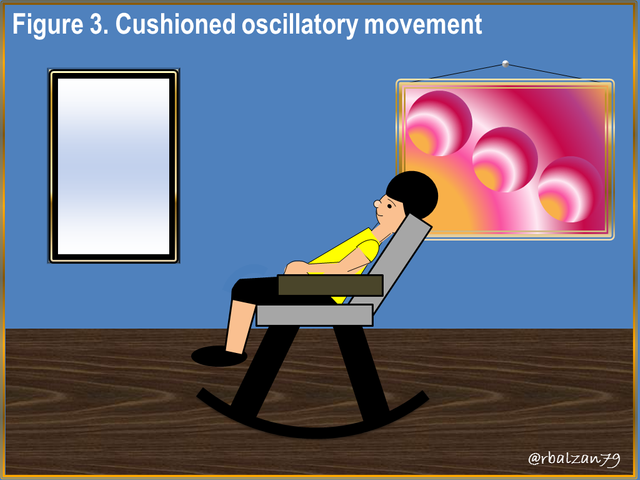
Many of us at some point in our lives have mounted ourselves on a fun instrument called a swing, and therefore, we have swung for a long time because it is an experience that excites us to see how we come and go quickly, to see how we are immobilized to stop applying some kind of force, then show the oscillatory movement carried out by a person mounted on a swing as shown in Figure 4 below.
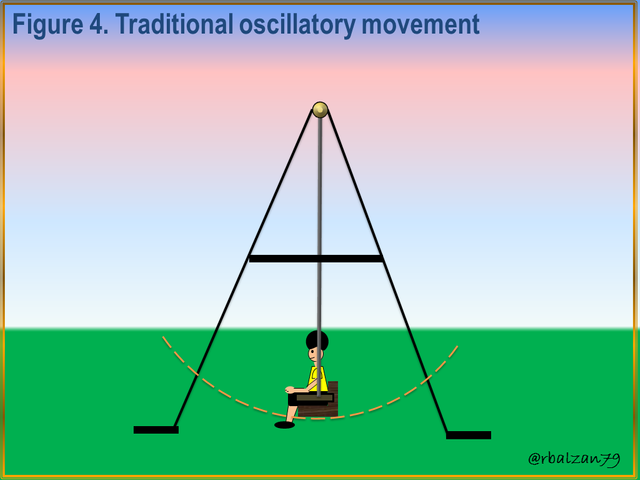
Simple harmonic movement
As we have expressed that a certain body, when losing its stable equilibrium, will try to recover it as long as there is some dissipative force acting on it, the loss of the stable equilibrium of this body caused by the disturbance of one of its physical magnitudes causes the appearance of a restoring force which will try to take the system to the equilibrium position.
The above we could observe in the previous figures, where the known simple harmonic movement (M.A.S.) appears and to make this restoring force act we need to establish the following formulation or mathematical equation:

It is important to know the elements that allow us to determine a simple harmonic movement through the geometric figure of a uniform circular movement, that is, a circumference, as we can see in the following figure 5.
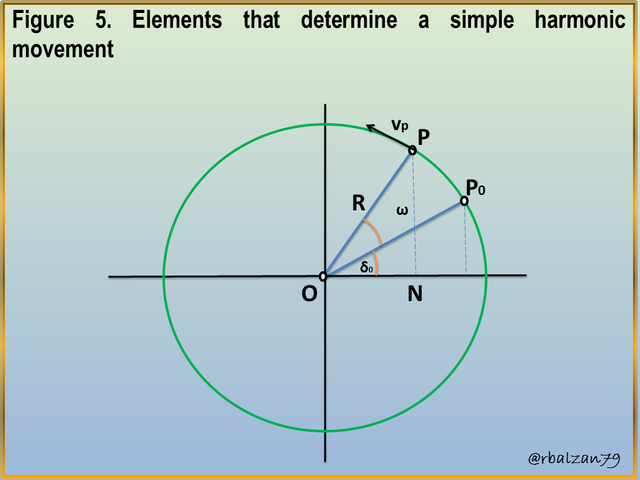
According to figure 5, in the initial instant t = 0, we have that the radius vector of P0 will form an angle δ0 with the mentioned axis of X, then a few seconds later it will form an angle δ = ω.t + δ0, therefore the abscissa x of N will be the elongation of the harmonic movement, whose mathematical equation will be:
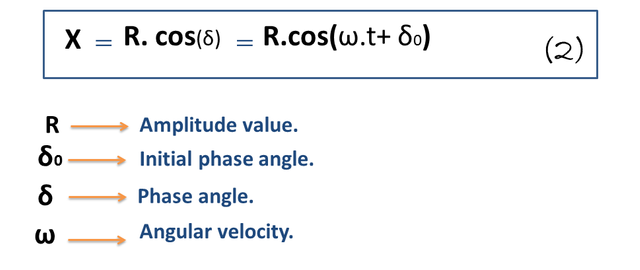
Innumerable oscillatory phenomena we find ourselves in our environment and we have applied them in different disciplines related to our intellectual development as well as physical exercise, achieving in this last incredible skills at the moment of carrying out such oscillatory phenomenon, as we can observe in the following figure 6.
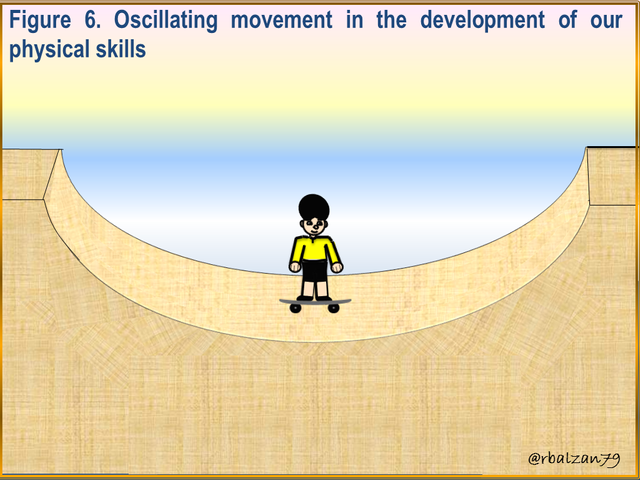
We all do not delight in observing this movement of figure 6, considered an extreme sport due to the great skills carried out in such a sport, proving that the phenomenon of movement is an intrinsic part of our lives.
Conclusion
All of us can grasp the splendid world that surrounds it through our senses, this allows us to be faithful witnesses of each of the phenomena that take place in the universe, physical science has been characterized by being an excellent interpreter between us and our mother nature and thus we have developed.
With this article we continue to expand the understanding of each movement of our environment and we have reached one of the most common movements such as the oscillatory, in this movement we find immersed other mobilities such as the vibratory and undulatory which we will analyze in future deliveries.
In the oscillatory movement its limits will not be fixed since the different friction forces dissipate energy, therefore, this type of movement is known as cushioned oscillatory, however, it is possible to deliver energy from the outside to a certain body or object when performing this type of movement.
The provided energy can compensate the loss of the same one originated by a certain friction and in this way we convert the oscillation movement damped in a non-damped one, a clear example is a pendulum clock which with the use of a weight we can compensate the dissipated energy during such movement as we observe in figure 2.
It is important to emphasize that not all the oscillatory movements present in our environment are harmonic, however, the most important of this type of movement is what we know as simple harmonic movement (M.A.S), since it represents an essential descriptive model of innumerable oscillations present in our universe.
In a very practical way this type of oscillatory phenomenon can be easily recognized by the swaying movement carried out by a particular particle, body or object, whether or not it is of a cushioned type. However, it is necessary to express that a movement generated by some type of vibration is also considered oscillatory, and due to its rapid oscillations they have been called vibrations and their vibratory movement.
We can express that a movement is oscillatory when its oscillations are less fast than those attributed to a vibratory movement, the latter in many occasions are imperceptible to the human eye, for this analysis we have considered those movements whose oscillations are slower and generally can be appreciated by our eyes.
The phenomenon of the movement allows us to carry out innumerable activities but of equal form so much our body as everything that surrounds us depends on this phenomenon, this makes that the same one is vital for the existence of the humanity, allowing us in addition to be able to enjoy recreational infantile and acrobatic activities as the ones shown in each one of the previous figures.
Until another opportunity my dear readers of steemit, especially the members of the communities friends of #steemstem and #curie for which I highly recommend to be part of these exemplary projects, as they highlight the valuable work of academia and the scientific field.
Note: All images were created using the Paint, Power Point and animated gif applications with the PhotoScape application.
Bibliographic References
[1] Charles H. Lehmann. Analytic geometry.
[2] Lior M. Burko and Richard H. Price. Department of Physics, University of Utah, Salt Lake City.
[3] Snapper, E., Troyer, R.J. Metric Affine Geometry. Dover, New York, 1971.
[4] David Morin. Oscillations, Chapter 1.
[5] WAN, Xin. Applications of Oscillatory Motion. General Physics I.
[6] Raymond A. Serway, Robert J. Beichner. Physics for Science and Engineering.
@tipu curate
Upvoted 👌 (Mana: 5/25 - need recharge?)
Thank you friends for your valuable support. Greetings.
Hello,
Your post has been manually curated by a @stem.curate curator.
We are dedicated to supporting great content, like yours on the STEMGeeks tribe.
If you like what we are doing, please show your support as well by following our Steem Auto curation trail.
Please join us on discord.
Thank you friends for your valuable support. Greetings.
¡Recibe Nuestro Apoyo Directo!En el @Nucleo-fse estamos empeñados en acompañarte y facilitar tu experiencia Criptográfica.
Estas invitado a formar parte del equipo y disfrutar de nuestros servicios.
Curado ManualmentePara más información, te esperamos en el Servidor de Discord: Núcleo- FSE
Thank you friends for your valuable support. Greetings.
Votado por el trail @team-mexico
Servidor en Discord TeamMexicoPRO ¡Te esperamos!
Delegaciones para @team-mexico ¡Ayúdanos a crecer!
10 SP - 25 SP - 50 SP - 100 SP - 150 SP- Mas información.
.png)
Curado Manualmente
Thank you friends for your valuable support. Greetings.
Excellent approach that you present to us @rbalzan79 regarding the oscillatory movement, very good animated images that illustrate very well the applications in real life of this movement. Thanks for sharing
Thank you, my friend, for your valuable commentary and support. Greetings.
This post has been voted on by the SteemSTEM curation team and voting trail. It is elligible for support from @curie and @minnowbooster.
If you appreciate the work we are doing, then consider supporting our witness @stem.witness. Additional witness support to the curie witness would be appreciated as well.
For additional information please join us on the SteemSTEM discord and to get to know the rest of the community!
Thanks for having used the steemstem.io app and included @steemstem in the list of beneficiaries of this post. This granted you a stronger support from SteemSTEM.
Gracias comunidad por su gran apoyo. Saludos.
Hola, nos surgio una duda sobre este articulo al ver las referencias citadas, a saber:
"
[1] Charles H. Lehmann. Analytic geometry.
[2] Lior M. Burko and Richard H. Price. Department of Physics, University of Utah, Salt Lake City.
[3] Snapper, E., Troyer, R.J. Metric Affine Geometry. Dover, New York, 1971.
[4] David Morin. Oscillations, Chapter 1.
[5] WAN, Xin. Applications of Oscillatory Motion. General Physics I.
[6] Raymond A. Serway, Robert J. Beichner. Physics for Science and Engineering.
"
Por favor nos podria aclarar que partes de este articulo provienen de cada una de las referencias bibliograficas y en que pagina(s) de tales referencias?
To listen to the audio version of this article click on the play image.

Brought to you by @tts. If you find it useful please consider upvoting this reply.